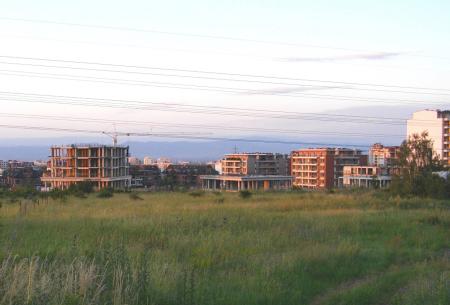
Resource description:
Toolkit for monitoring urban sprawl and evaluating threats to sustainability.
Author/Contact:
TURAS
Expert contact: Petar Nikolov
Advantages:
- "Sprawl Monitor" proposes a toolkit for monitoring the processes on the urban fringe and identifying sprawling trends. By monitoring suburbanization and all types of development and changes, the tool can play a key role in planning and policy making. Furt
- Thus, a long-term monitoring and proper assessment of trends and changes will contribute not only to better understand the nature and growth of sprawl but also to enable the visualization of potential future scenarios. This is essential for the developmen
- Main outcomes: knowledge/data and economic benefit.
Uses of this resource:
The growth of big cities is generally considered a trend with various positive impacts. The problem is that in Europe (like in most of the developed world) growth is usually associated with suburbanization and urban sprawl. Along with some positive aspects, sprawl is generally considered a negative trend which causes high rates of soil sealing, loss of natural and rural land, loss of greenery and biodiversity, and contamination of air, soil, and water.
WHY DO WE HAVE THIS CHALLENGE?
Migration and urban sprawl have been around for a long time. As suburbs developed and roads and highways sprouted, business and industries followed the population migration from urban to suburban areas. As further growth occurred, newer suburbs expanding into previously rural areas encircled older suburbs. This outward expansion of urban growth continues to the present around most of the metropolitan areas. Several decades of unchecked urban sprawl have resulted in a host of environmental, economic, and social problems. Although sprawl is not a new problem, addressing, assessing, and monitoring it is even more important nowadays as a mean of meeting our commitments on climate change problems. In this context, it is essential to be aware of urban sprawl rates and the threats they may present to sustainable and resilient urban development, and to this end, cities need to monitor the existing urban trends, paying special attention to those taking place in the outskirts.
Additional information:
WHO SHOULD BE INVOLVED?
FACILITATORY (PUBLIC) BODIES:
planning and development department; land use planning department; policy development department; environmental and sustainability department; IT department
LOCAL TASK FORCE:
local or regional authority; researcher; professional expert
SUITABLE FOR:
urban region; urban-rural interface
MAIN NECESSARY RESOURCES ARE:
monetary investments; expert knowledge; public institutional set-up
Licence:
- Free, no licence
Development stage:
- Full, working product